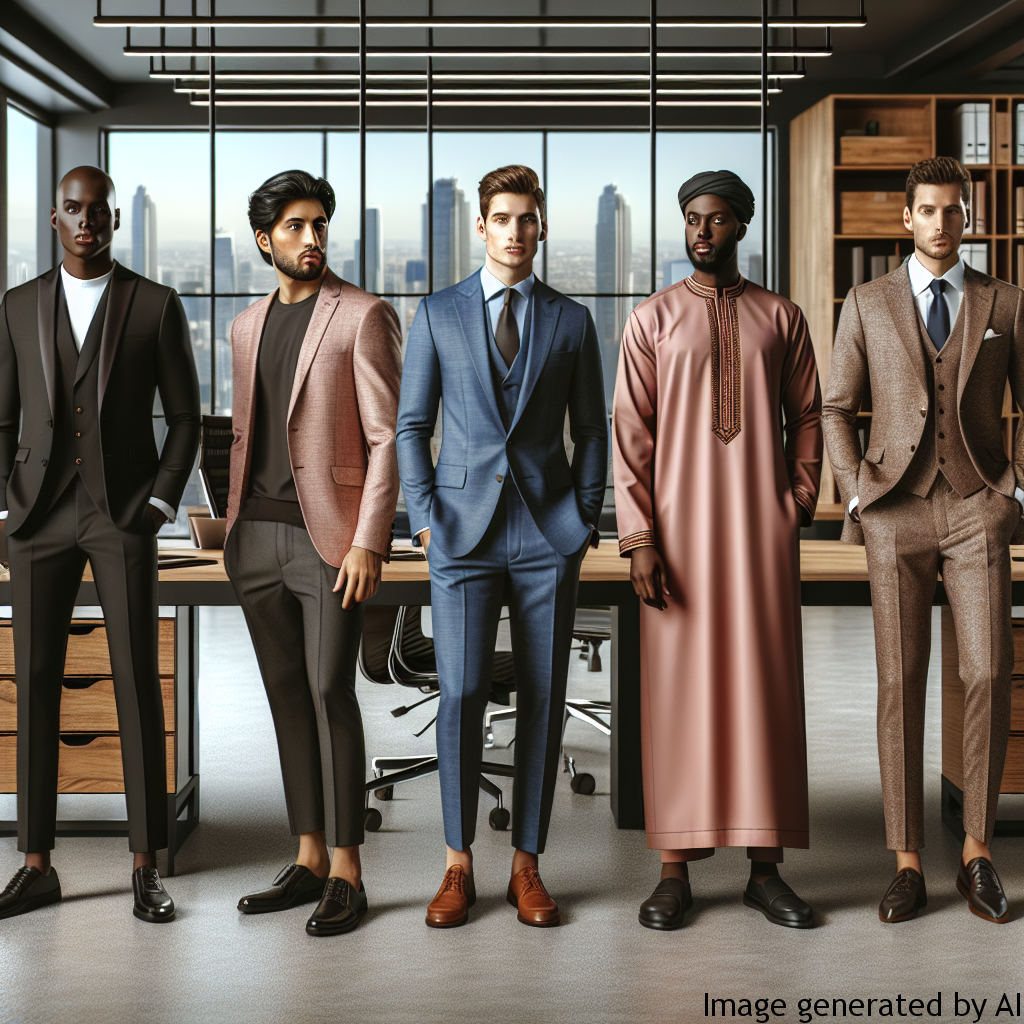Introduction
Menswear in the workplace has seen a dramatic transformation over the years, from the
uniform suit-and-tie ensemble to a more varied and playful expression of personal style. As
modern workplaces evolve and dress codes relax, men have an increasingly wide array of sartorial
options. However, with this freedom comes expectations and pressures tied to gender roles and
masculinity, which can significantly impact a man’s psychological wellbeing.
Gender Expectations and Their Impact on Men’s Psychological Health
Traditionally, the world of men’s fashion has dictated a narrow and predefined set of
standards. Suits, ties, and formal shoes have typically been the norm in professional settings,
reflecting societal expectations of masculinity that tie it to power, professionalism, and
authority. What one wears to work, especially for men, is often more than a style statement –
it is intrinsically linked to their identity, status, and confidence.
The Pressure to Conform
Adhering to these gendered expectations can be stressful. There is a pressure for men to
present themselves in a way that exudes authority and professionalism at all times. The fear of
standing out or being perceived as unprofessional or non-traditionally masculine can lead to
anxiety and self-consciousness.
The Dichotomy of the Modern Workplace
On the other hand, as workplaces begin to discard stringent dress codes, men are
encouraged to express their individuality and creativity through their attire. This shift,
although positive, creates its own set of challenges as it requires men to navigate the
delicate balance of projecting an image that is both professional and authentically expressive
of their personal style.
Examples of How Gender Roles Can Influence Men’s Lives
Adherence to rigid gender roles can limit a person’s self-expression and induce stress.
For instance, a man who enjoys bold, vibrant colors may resist incorporating them into his
workplace attire amid fears of drawing undue attention or challenging perceived norms of
masculinity. Similarly, a man with a flair for fashion might opt for a more subdued wardrobe
in the office to blend in and avoid being unfairly perceived as frivolous.
Following the ‘rules’ associated with men’s fashion at work can prompt a subtle form of
self-erasure, leading to feelings of invisibility or unimportance. This form of
psychological self-harm can contribute to various mental health issues, such as depression
or low self-esteem.
Tips for Improving Psychological Health With regards to Gender Roles
It is essential to stress individuality and personal comfort over societal norms. Here
are some tips:
- Encourage men to explore their personal style and express themselves through their
work attire. - Emphasize that everyone has unique personal tastes and that there is no ‘right’ or
‘wrong’ choice in fashion. - Promote a workplace culture that values individuality over perceived professionalism
in attire. - Provide resources for mental support within the workplace, especially those targeted
towards struggles related to identity and self-expression.
Conclusion
Menswear in the workplace is a significant aspect of a man’s professional life that extends
beyond the scope of fashion. It pertains to identity, expectations, and mental health far more
than we often realize. As society and workplaces continue to evolve, upending conventional gender
norms is critical. Celebrating men’s individual style and reassuring them that their worth
extends beyond what they wear is a crucial step towards improving their psychological health
in the workplace.

